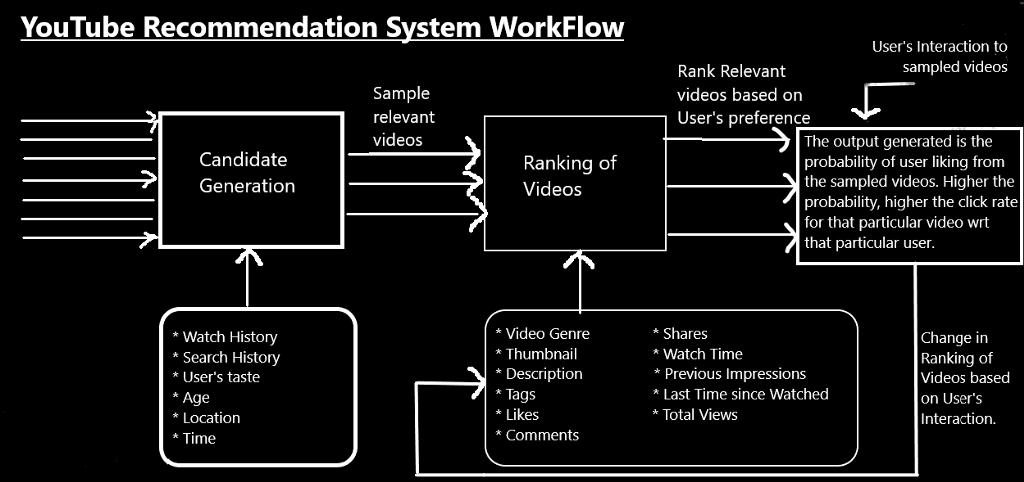YouTube relies heavily on AI to deliver content. The newest YouTube algorithms put a great deal of value on the average time that a person views any video, gives it a like or dislike, and comments. Similarly, the recommender system is one of the most powerful use cases of ML that is encountered by every one of us many times a day.
There are multiple ways to build a recommendation system:
Collaborative Filtering: This is a type where we tend to build collaborations between various users and items(videos).
Matrix Factorization: It tries to dissolve both user and item vectors together thus decomposing them and providing YouTube with better comparison metrics. Unlike Item-Item collaborative filtering it isn’t computationally expensive but it lacks interpretability, it lacks the answer to “why they are recommending this video” thus leading to low accuracies.

Deep Learning Architecture: In 2016, Google publicized Deep Learning architecture for YouTube recommendation and became one of the first companies to deploy production-level deep neural networks for recommender systems.
At YouTube, there are millions of content ideas that are uploaded by users daily. The recommendation system tends to classify videos first based on the user’s characteristics and then based on the video’s metadata.
The algorithm analyzes the user’s attributes like Watch History, Search History, User’s taste, Age, Location, Time and then samples out a few videos and sends them for the next phase.
The YouTube algorithm selects videos for viewers with two goals in mind: finding the right video for each viewer and enticing them to keep watching.
Join Our Telegram Channel for More Insights.Join Now








